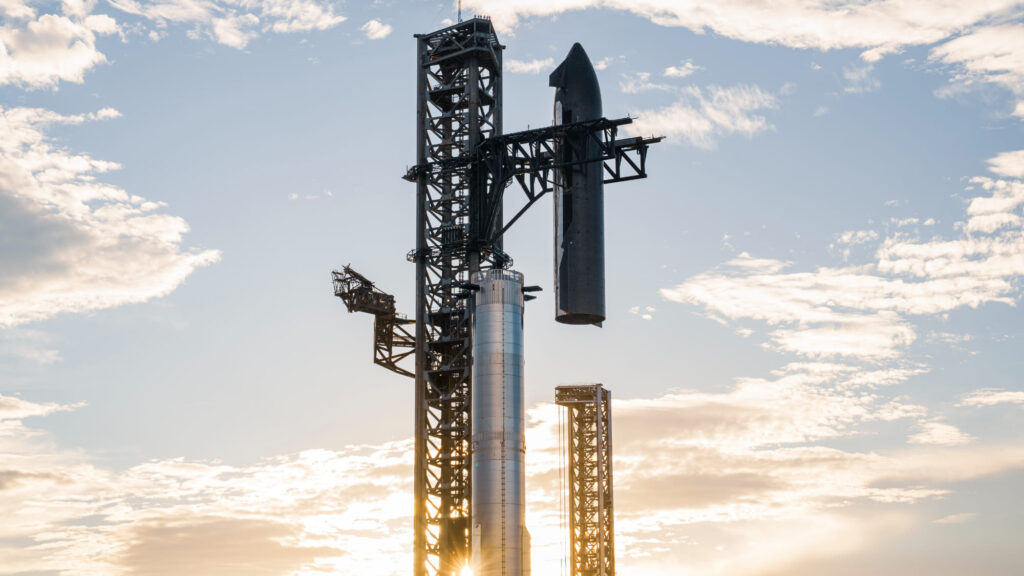SpaceX Postpones Starship Flight 10 Amid Ground Systems Glitch

In a dramatic turn at Starbase, South Texas, SpaceX has called off its highly anticipated Starship flight 10, citing a critical “ground systems issue” that emerged roughly 30 minutes before the scheduled liftoff. The massive rocket, comprising a 232-foot Super Heavy booster and 171-foot Starship upper stage, stood primed on the launch pad and was already undergoing fueling operations when the countdown was abruptly halted. The historic launch attempt—planned for Sunday evening, August 24, 2025—was scrubbed, leaving engineers scrambling to diagnose the problem and fans on edge awaiting a new launch date. (Reuters, The Guardian, San Antonio Express-News, The Times of India)
SpaceX shared the news via platform X, stating: “Standing down from today’s tenth flight of Starship to allow time to troubleshoot an issue with ground systems.” The corporation quickly pivoted, indicating a new launch window as early as Monday, August 25, weather and fixes permitting. (Reuters, San Antonio Express-News, wuky.org, Wikipedia)
A Mission of Milestones and Setbacks
Starship Flight 10 was far more than another test launch—it was a crucial crossroad in SpaceX’s relentless pursuit of reusable spaceflight and interplanetary missions. The flight was to showcase improvements in thrust capability, heat-shield resilience, and sturdier steering flaps, all essential for Starship’s return and reliability. These upgrades weren’t just technical feats—they were strategic milestones intended to close gaps exposed in previous attempts. (Reuters, The Guardian, Ars Technica, NASA Space News)
Moreover, the mission had been cleared by the FAA after a probe into Starship Flight 9’s anomaly—an approval that fueled expectations for Flight 10’s success. (NASASpaceFlight.com)
The Price of Progress: Learning Through Failure
SpaceX’s testing philosophy has long embraced a “fail fast, fail forward” approach. This year alone has seen several spectacular setbacks: two mid-air explosions (Flight 7 and 8), a loss of control and breakup during reentry (Flight 9), and a catastrophic static fire test in June that destroyed one of the test vehicles and damaged test infrastructure. (NASA Space News, Ars Technica, Flying Magazine, Space, Wikipedia)
Despite such failures, SpaceX continues to reiterate designs steadily, rolling new ships through Starbase’s mega-factory. Indeed, Flight 10 featured Ship 37 and Booster 16 in a Block 2 configuration—an updated vehicle yielding fresh data for future reliability. (SpaceZE, Wikipedia, Astronomy)
What Flight 10 Aimed to Achieve
The mission profile for Flight 10 had been meticulously mapped out. The heavy-lift Super Heavy booster was to conduct landing burn tests and attempt a splashdown in the Gulf of Mexico, while Starship’s upper stage (Ship 37) would enter a suborbital trajectory, deploy simulated Starlink satellites, perform an in-space engine relight, and then execute reentry manoeuvres over the Indian Ocean to test tile durability and aerodynamic stability. The successful execution of each phase was critical to proving the rocket’s reusability and readiness for future missions. (Wikipedia, SpaceZE, Ars Technica, NASA Space News)
Flight 10 represented not just another test, but a demonstration that SpaceX could complete a full launch cycle—from liftoff to splashdown and recovery—bringing the company one step closer to its Moon and Mars ambitions. (Analytics Insight, NASA Space News, Reuters)
Time and Timing: Launch Delays and What’s Next
SpaceX initially targeted June 29, 2025, for Flight 10—a timeline abruptly derailed by a static-fire explosion that destroyed Ship 36. Months of integration and testing followed, culminating in FAA clearance and a hopeful August 24 liftoff. That window was missed when a ground issue emerged just before liftoff, pushing the attempt to August 25 at 6:30 p.m. CDT (7:30 p.m. EDT), according to updated schedules and tracking resources. Space.com reported this new window and emphasised the importance of watching updates. (Wikipedia, Space)
In the immediate aftermath of the scrub, SpaceX indicated they might try again Monday, provided troubleshooting proceeds without delay. Local outlets noted a 45% chance of favourable weather, though mission safety and system integrity remain top priorities. (San Antonio Express-News, The Times of India)
A Giant Rocket, a Giant Step—When It Works
At nearly 400 feet tall when stacked, Starship surpasses NASA’s Apollo-era Saturn V in height. It houses 33 methane-fueled Raptor engines on the booster, and six on the upper stage. It’s engineered for maximal reuse—catching the booster for vertical landings, relighting engines mid-flight, and deploying payloads efficiently. Each test brings SpaceX closer to operational routines that could bring the cost of space access down dramatically. (The Guardian, Ars Technica, SpaceZE, Wikipedia)
Success on Flight 10 would mark the first complete test cycle of 2025, following a year of learning curves and review. More importantly, it would signal real progress in delivering Starship’s promise for enabling NASA’s Artemis missions and Elon Musk’s Mars plan. (Reuters, New York Post, The Guardian, Wikipedia, NASA Space News)
SpaceX’s 2025 Launch Landscape
SpaceX has experienced both bold successes and jarring setbacks throughout the year. Earlier Starship flights either ended in early terminations or disintegration. A static-fire test in June caused an explosion that damaged ground assets. Despite that, the company rolled on, prepping new blocks and successfully performing engine tests, including a full panel static fire for Ship 37. (Gizmodo, Flying Magazine, SpaceZE)
NASA’s reliance on Starship for the Artemis 3 lunar landing in 2027 adds additional weight to each test flight. For SpaceX, a clean run of Flight 10 could re-establish confidence in both the hardware and its path forward. (Reuters, New York Post, NASASpaceFlight.com, NASA Space News)
Final Thought: The High Stakes of High Altitudes
SpaceX’s decision to postpone the Starship launch tonight underscores the tension between ambition and caution. The Starship launch today could rewrite timelines—or at least signal that the long grind of iterative testing is paying off. But if critical systems at stage zero fail, every milestone slips.
For now, the mission hangs in suspense, with the next window set for Monday evening. As SpaceX prepares for another attempt, the world will be watching—not just for fireworks, but for whether this Starship takes another step toward a future where humanity’s reach extends beyond Earth’s bounds.



